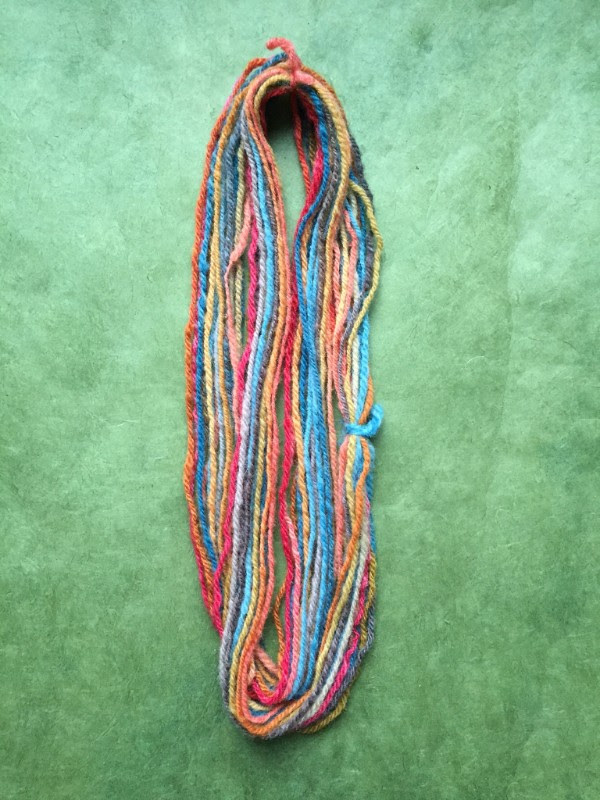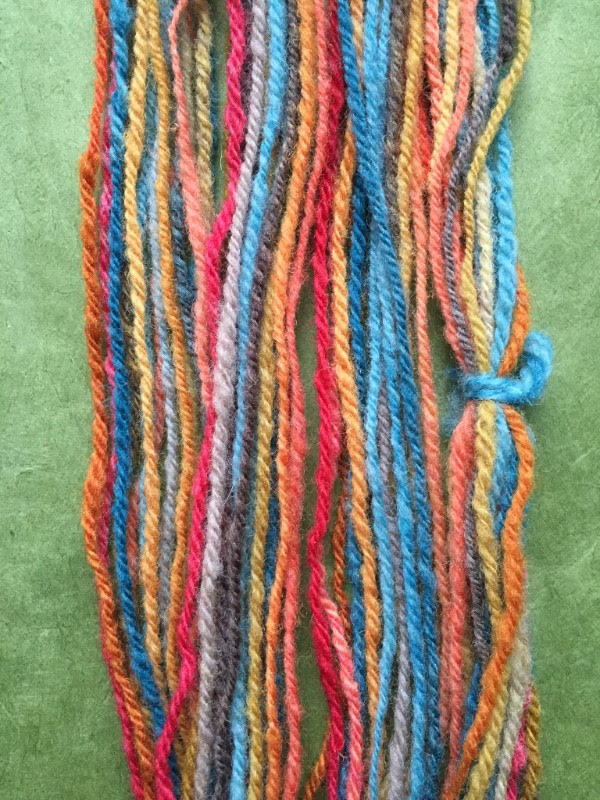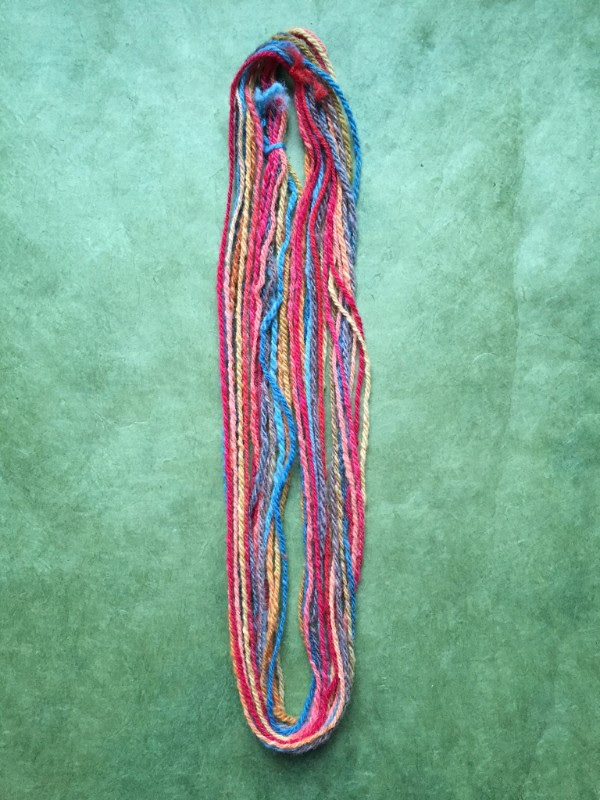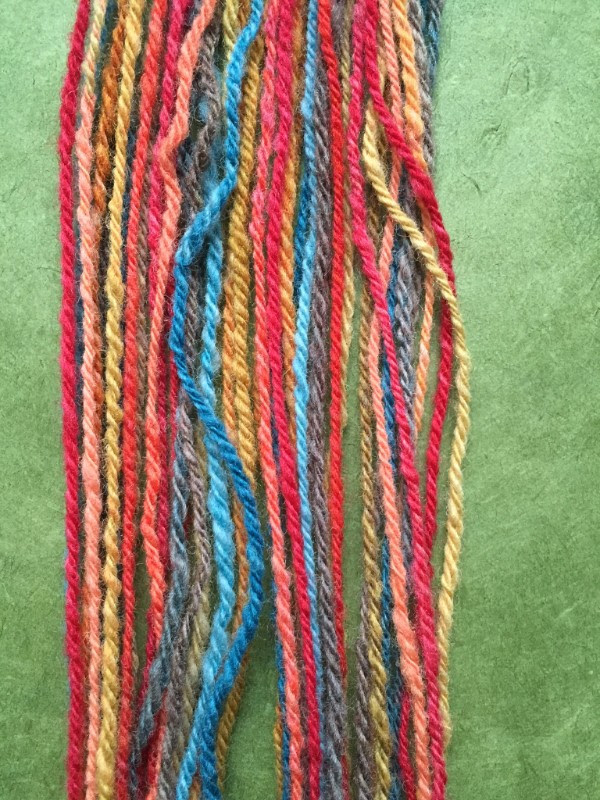Color theory 101: color theory for spinners
I'm *so* excited to have amazing fiber artist/teacher/spinsib Jillian Moreno (perhaps you know her from Knittyspin?) share how she shifted a fiber from a variegated colorway into a gradient colorway. Don't know what those terms mean? Don't worry! She spells them out below. Take it away, Jillian!
Dorset Down in Boardwalk.
When I first started spinning I used to just spin everything as it came. I would buy beautifully dyed fiber, split it in two, spin it from end to end and ply the two singles together. I did that for a long time, but now I can’t quit playing with fiber I get. I rarely spin fiber as it comes anymore.
Take this gorgeous variegated Dorset Down roving in the colorway Boardwalk from theSheepspot fiber club (above). I got it into my head that I wanted to make this variegated roving into a gradient yarn.
The difference between variegated and gradient is simple. A variegated fiber or yarn has several colors that appear more than once on the length of the fiber or yarn; it can be in a pattern or a random placement and is usually in fairly short color runs. Agradient fiber or yarn has several colors with each color only appearing once, usually in longer color runs.
Because I like to play with my fiber, I spun this roving in a couple of ways.
I spun part of it as it came into a fine single and chain plied it, keeping the colors as distinct as possible. Here’s the roving ready to spin.
And the finished variegated yarn.
Then I made the variegated roving into a gradient. I divided the roving by color, just pulling it apart, trying for cleanest break I could get. I didn’t worry too much about perfectly clean breaks since I like some variation in my colors.
If you want only clear color, keep pulling out the tiny bits of color that don’t belong out of your fiber chunks. These little bits are great to save for making batts.
I chose a color order and spun the fiber into a fine single and chain plied it.
Here’s the finished gradient yarn.
Here are the two yarns side by side, variegated on the left and gradient on the right. Similar, but different. I love it.
Here’s a different view. The gradient yarn is on the left and variegated yarn on the right.
With the yarns spiraled like this you can really see the difference. The colors in the gradient are used only once and the colors in the variegated are used more than once with much more blending between colors. The blue is a particular standout.
Just for fun I spun and plied together one single of the variegated and one single on the gradient. It’s a color mixing party!
There are so many ways to work with a braid of fiber. One day I want to knit a sweater using a single colorway manipulated in a huge variety of ways; I think it would be stunning.
All photos © Jillian Moreno.
If you'd like information like this, along with sneak peeks at upcoming yarns and fibers, delivered right to your inbox each week, sign up here to get my newsletter! You can also opt-in to get my e-course on choosing and using breed-specific wools as a special thank you!










